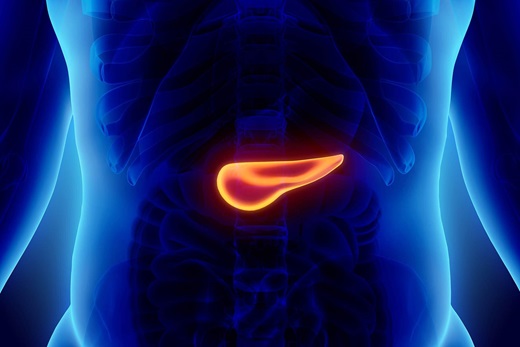Pancreatic Cancer Pain Management

Comprehensive Pain Assessment
Your physician will conduct a comprehensive pain assessment to determine:
- When the pain started
- Where the pain is located
- How intense the pain is
- How various cancer treatments have impacted your pain level
Following the assessment, your doctor will help devise a treatment plan designed to maximize your comfort.
Pain Assessment Team
Your pain management team may include pharmacists, social workers, nurses and palliative care physicians who work together to increase your comfort.
The palliative care team works with your primary oncologist to provide:
- Communication with you and your physicians
- Treatment expertise of pain and other symptoms
- Navigation through the health care system
- Guidance with difficult decisions and complex information
- Advice about treatment options and assistance in evaluating options
- Emotional and spiritual support for you and your family
Medications
Pain medications taken round the clock rather than on an as-needed basis tend to be more effective and may decrease the total daily amount of pain medication required. Common medicines used for cancer pain include opioids or narcotics (the strongest pain relievers available), acetaminophen and nonsteroidal anti-inflammatory drugs (NSAIDs).
Pain caused by pancreatic cancer is often treated with long-acting oral morphine or other opioids. Patients who cannot take opioids orally may be administered continuous-release medication skin patches or medication suppositories. Some patients may also benefit from an intravenous infusion of opioid medication in which they can get pain relief as needed through a programmable, portable pump. For more severe pain that has not responded to these measures, anesthetics can be delivered through small tubes called catheters placed near the spine.
An alternative option for delivering pain medication is through a pain pumps, which releases pain medication in the epidural space around the patient’s spinal cord. Pain pumps are small reservoirs of pain medication implanted under the patient’s skin. The medication gets delivered on a predetermined timeframe through a thin tube extending from the reservoir to the spinal cord. This eliminates the need to take oral medications. Since the pain drugs are delivered directly to the spinal cord, some side effects may be avoided.
Side effects of pain medications and other pain management therapies may include constipation, diarrhea, nausea and vomiting. These may impair the appetite of the patient, increasing the rate of weight loss, fatigue and poor nutrition.
Surgical Procedures and Radiation Therapy
There are some surgical procedures that may diminish the pain of pancreatic cancer patients. These may be performed in conjunction with surgery or separately.
- Alcohol nerve block: Surgeons inject a local anesthetic into the roots of nerves that carry pain signals from the damaged pancreas to the brain. This procedure, performed in an outpatient setting, provides pain relief for up to three or four months as it numbs the nerves.
- Thoracoscopic splanchnicectomy: This minimally invasive procedure cuts specific nerve branches.
- Endoscopic ultrasound-guided celiac plexus nerve block: Using this technique, the physician uses a thin, lighted tube called an endoscope to look into the stomach and then place a needle through the stomach to inject an anesthetic into the nerves that transmit pain from the pancreas to the brain.
Another modality to assist with pain management is external beam radiation therapy. During this treatment, a radiation beam is directed at the tumor and may provide rapid-onset pain relief.
Nondrug Pain Treatment
Patients may also benefit from nondrug pain treatments including:
- Relaxation
- Guided imagery
- Massage
- Hypnosis
- Acupuncture
- Physical therapy
- Position for comfort training
- Coping skills training
- Support and counseling
These therapies can be used in conjunction with pain medications or other traditional treatments.



